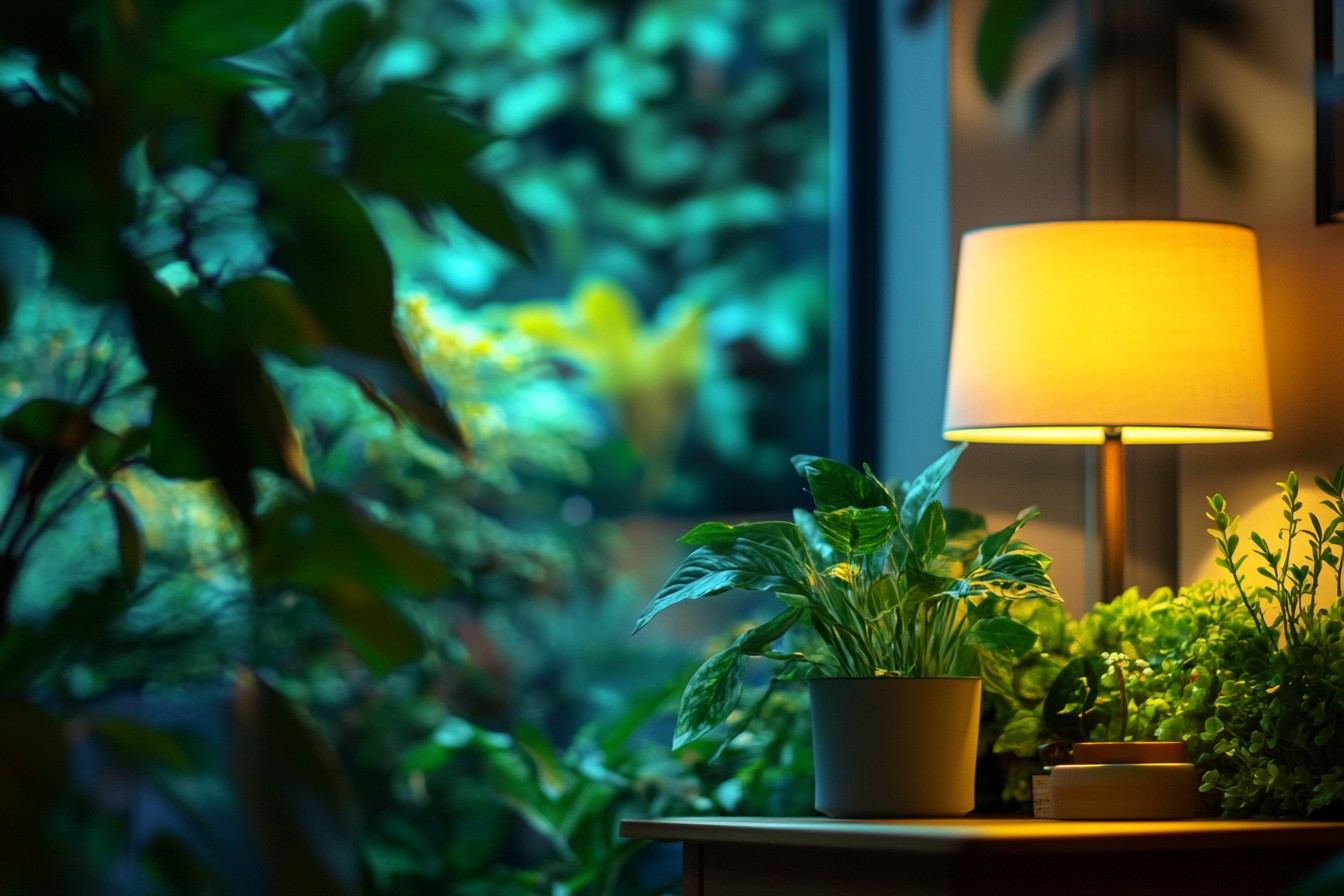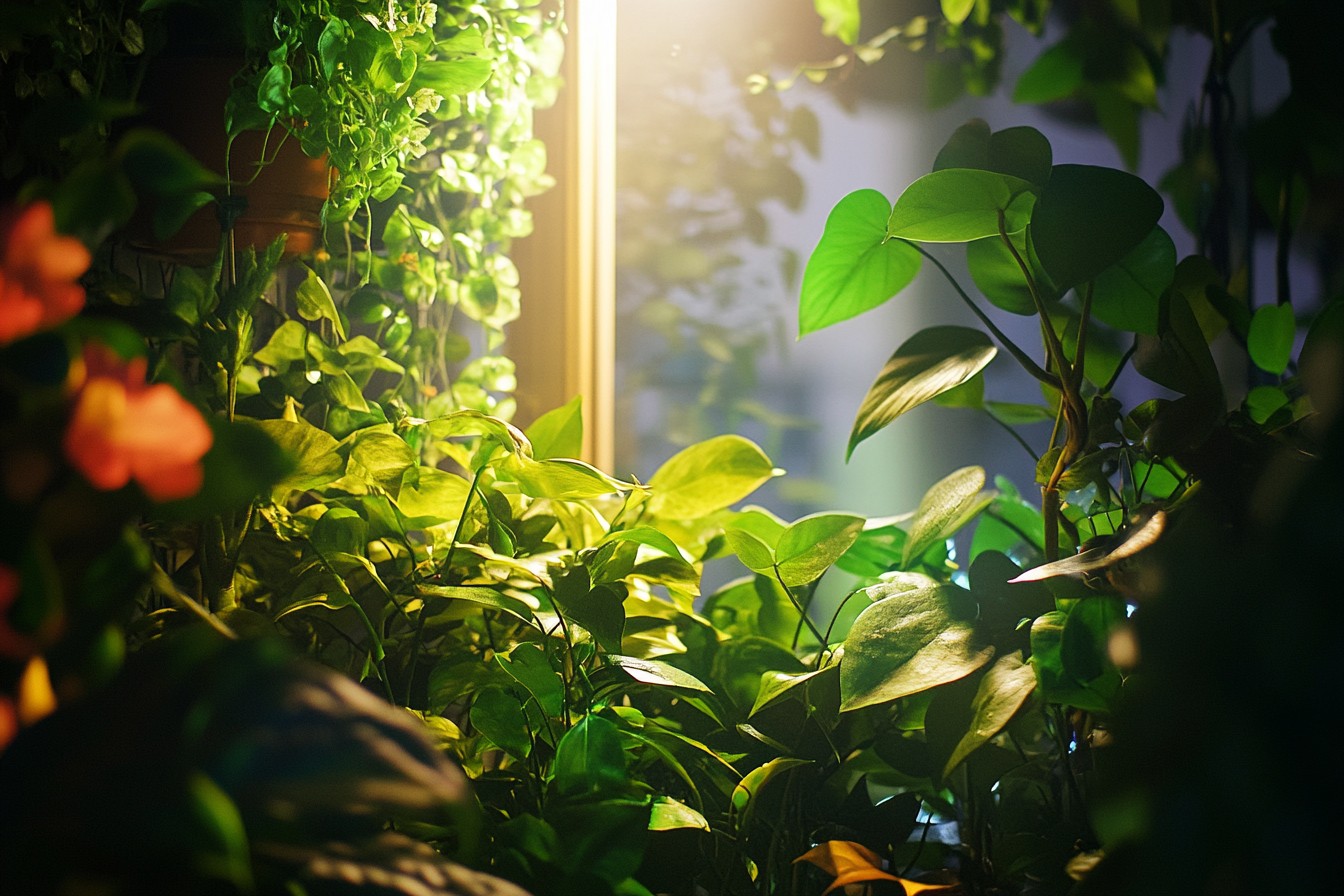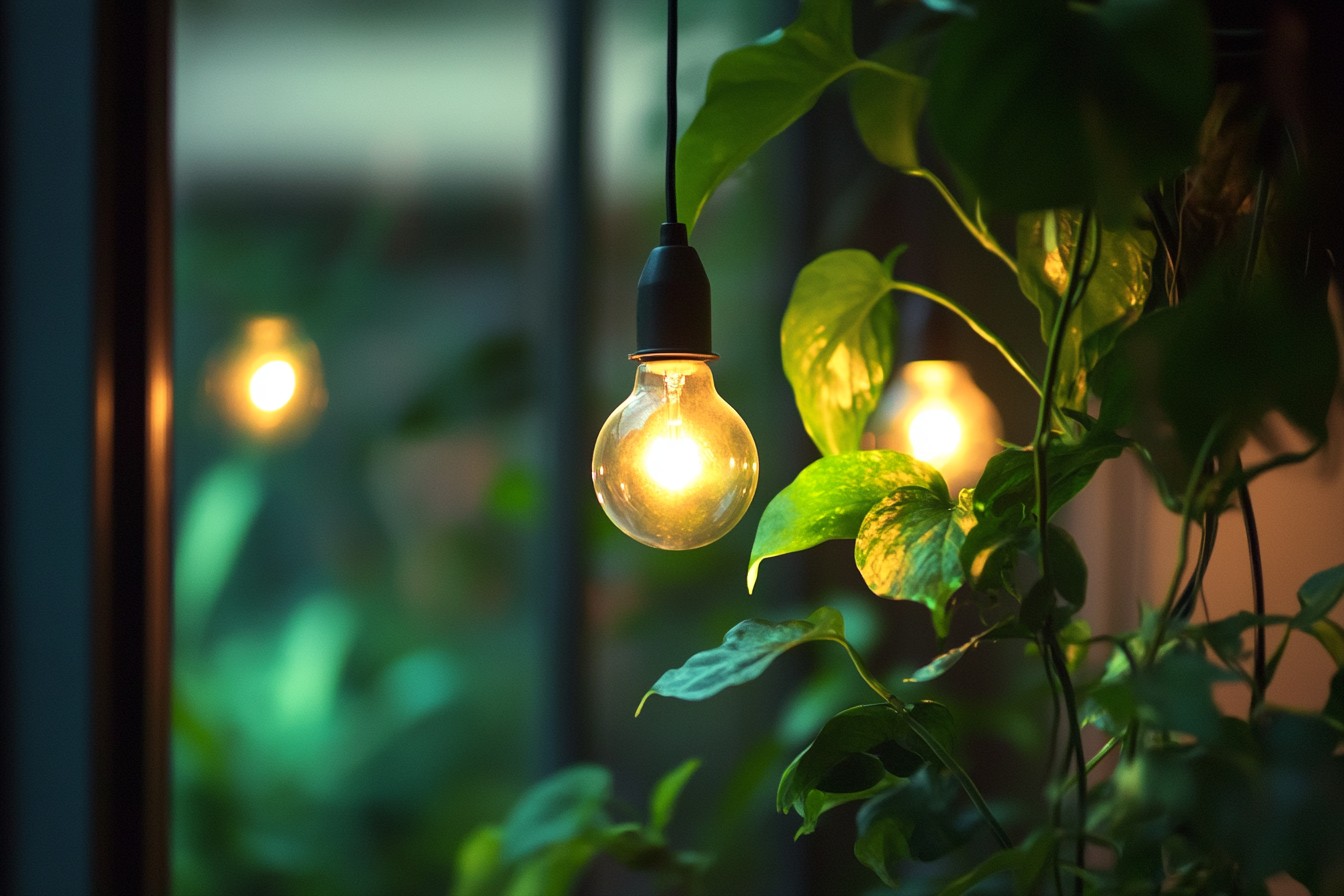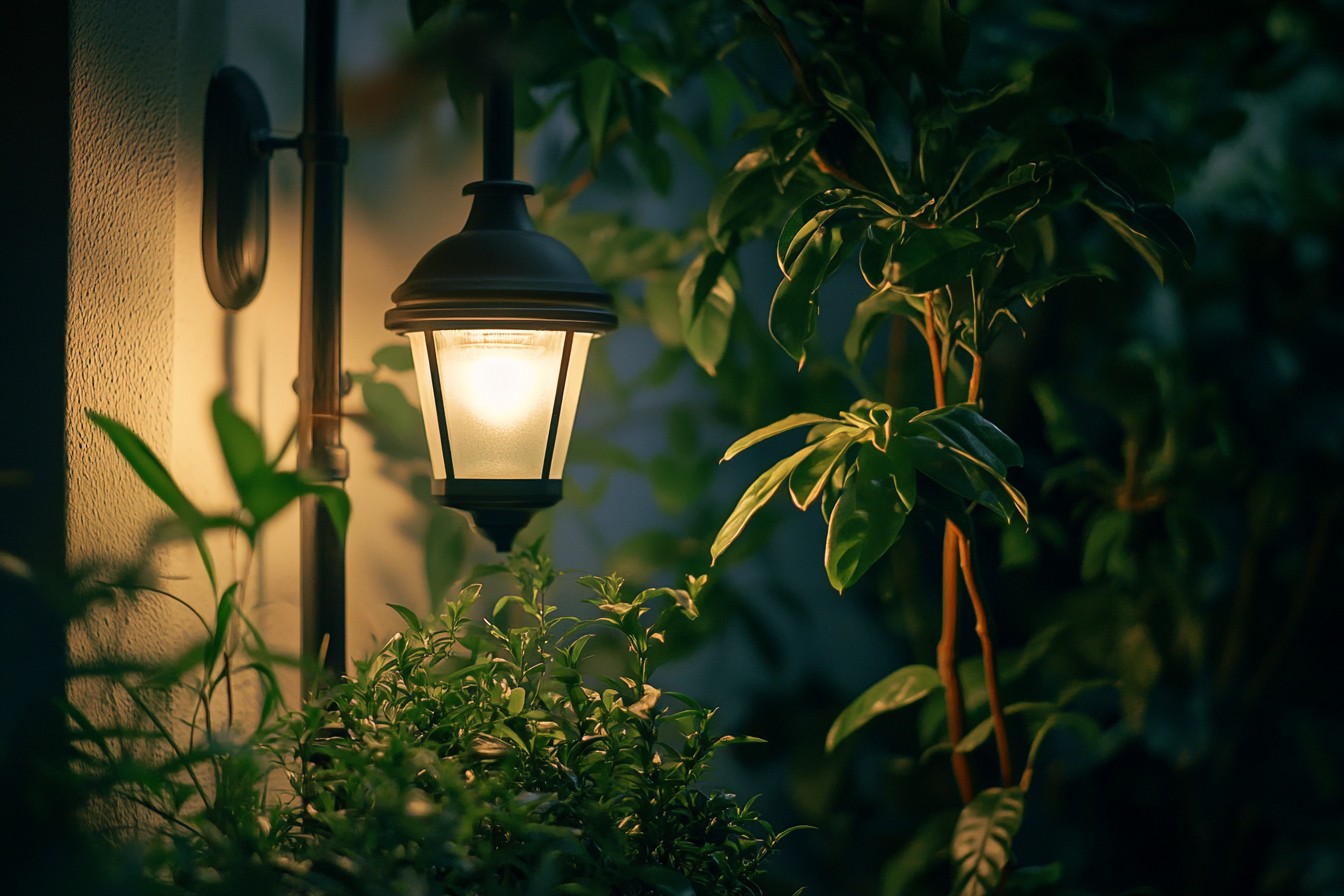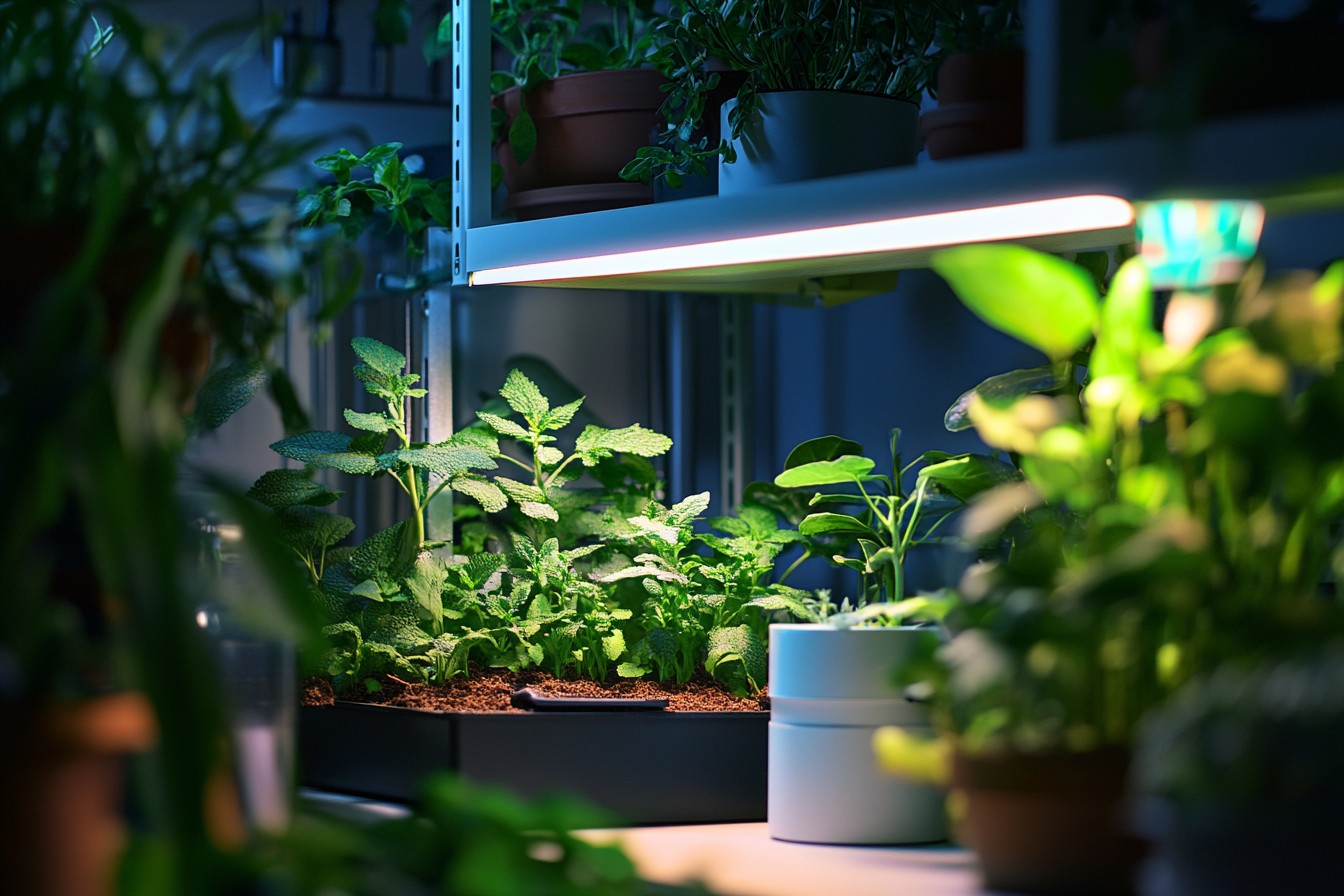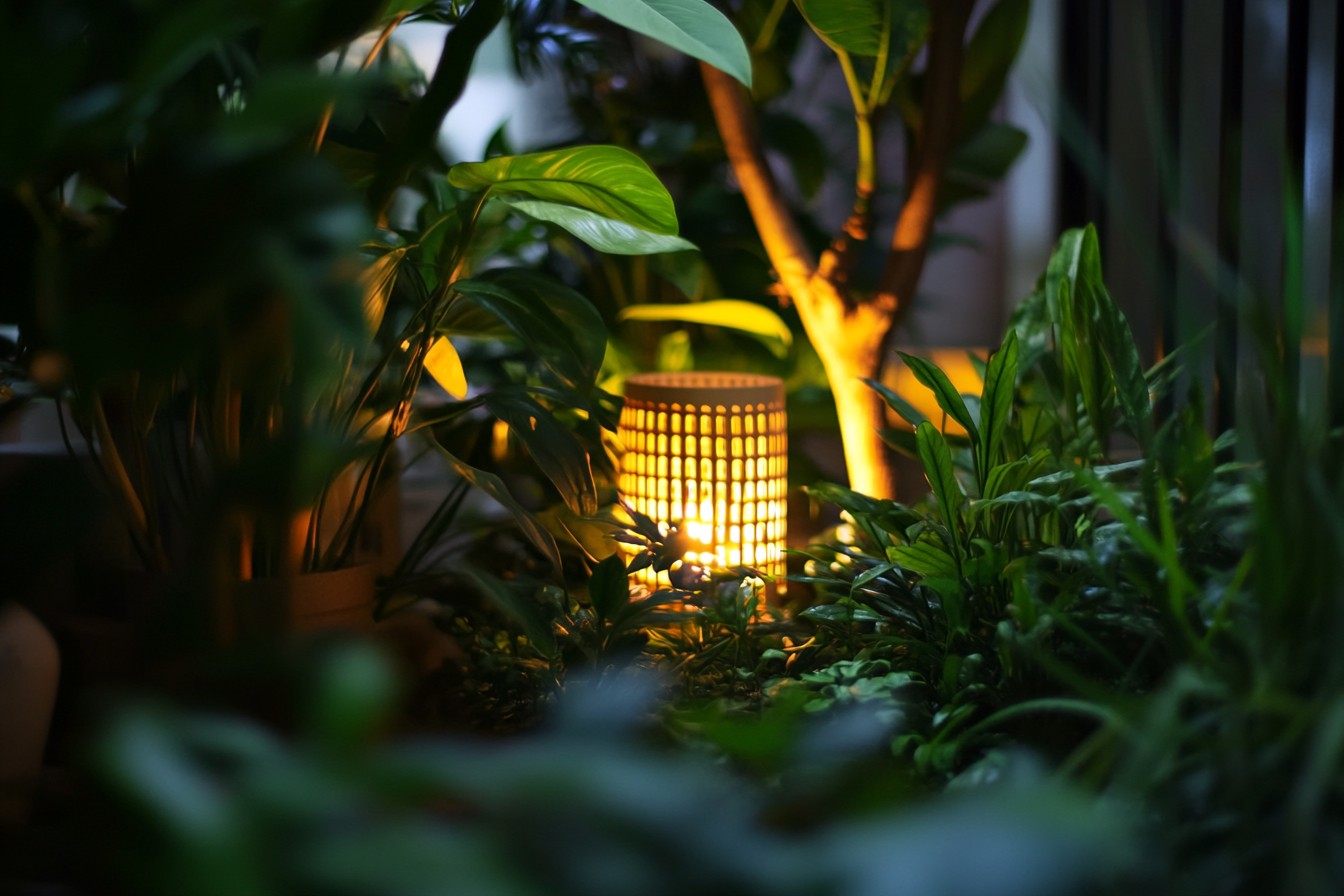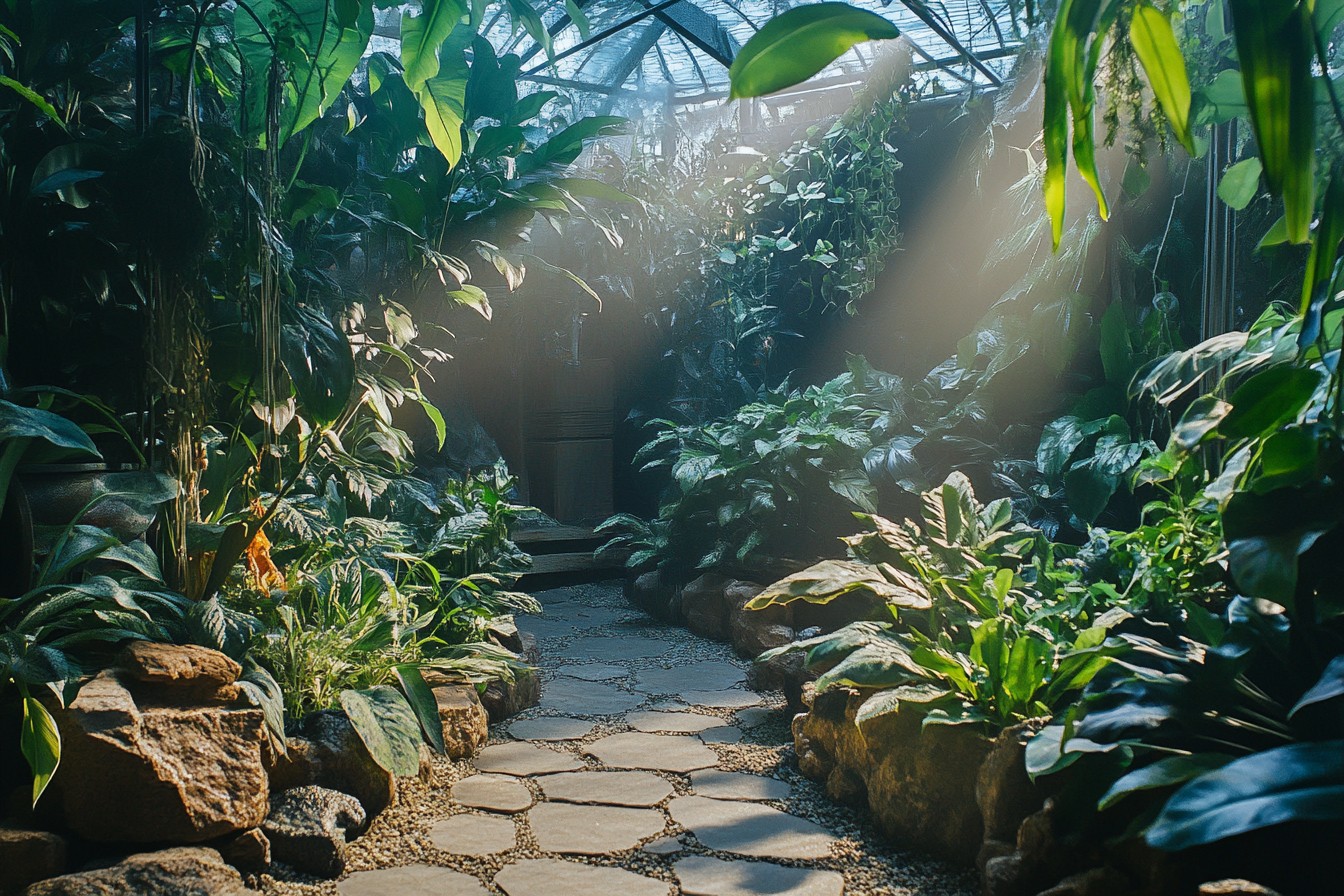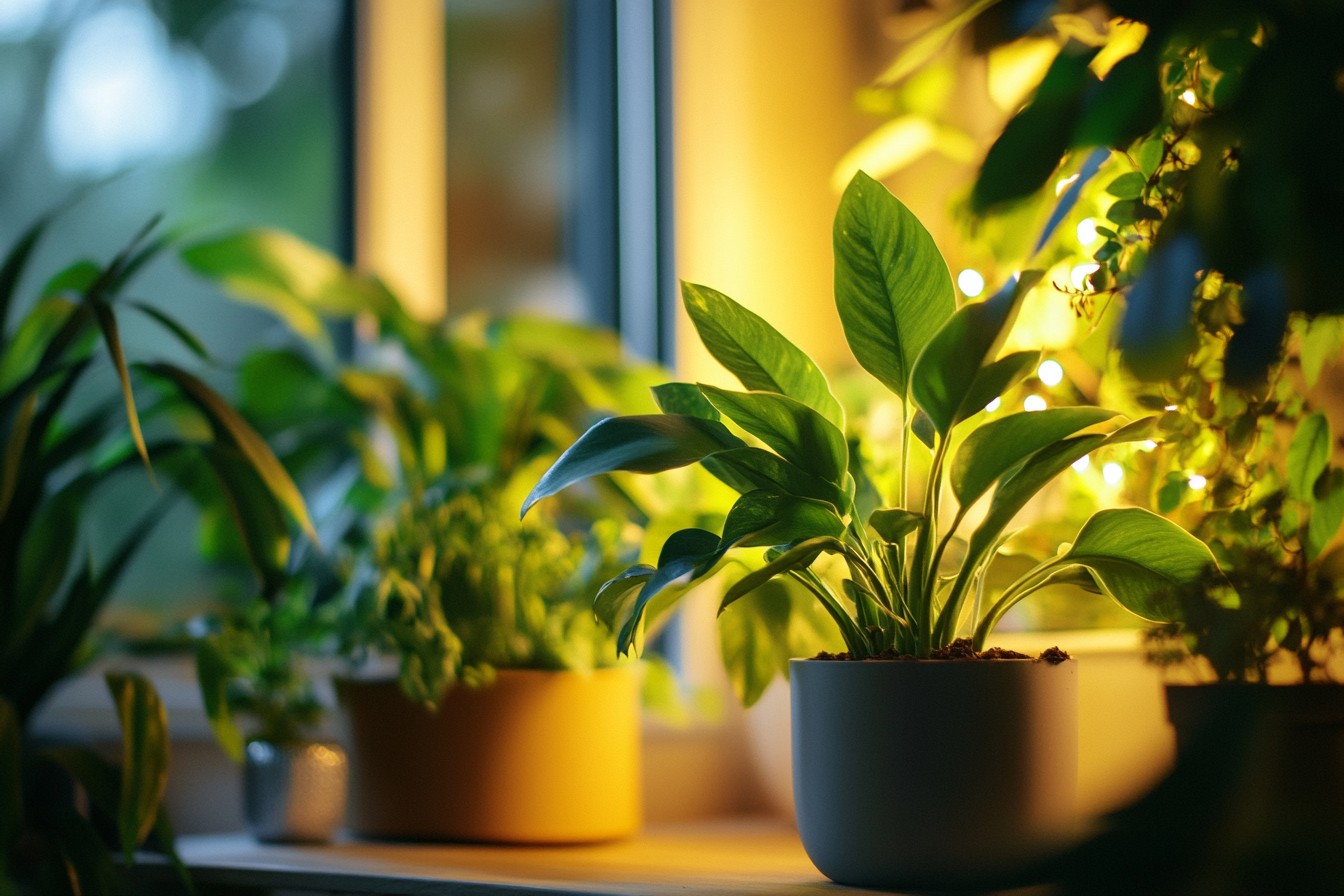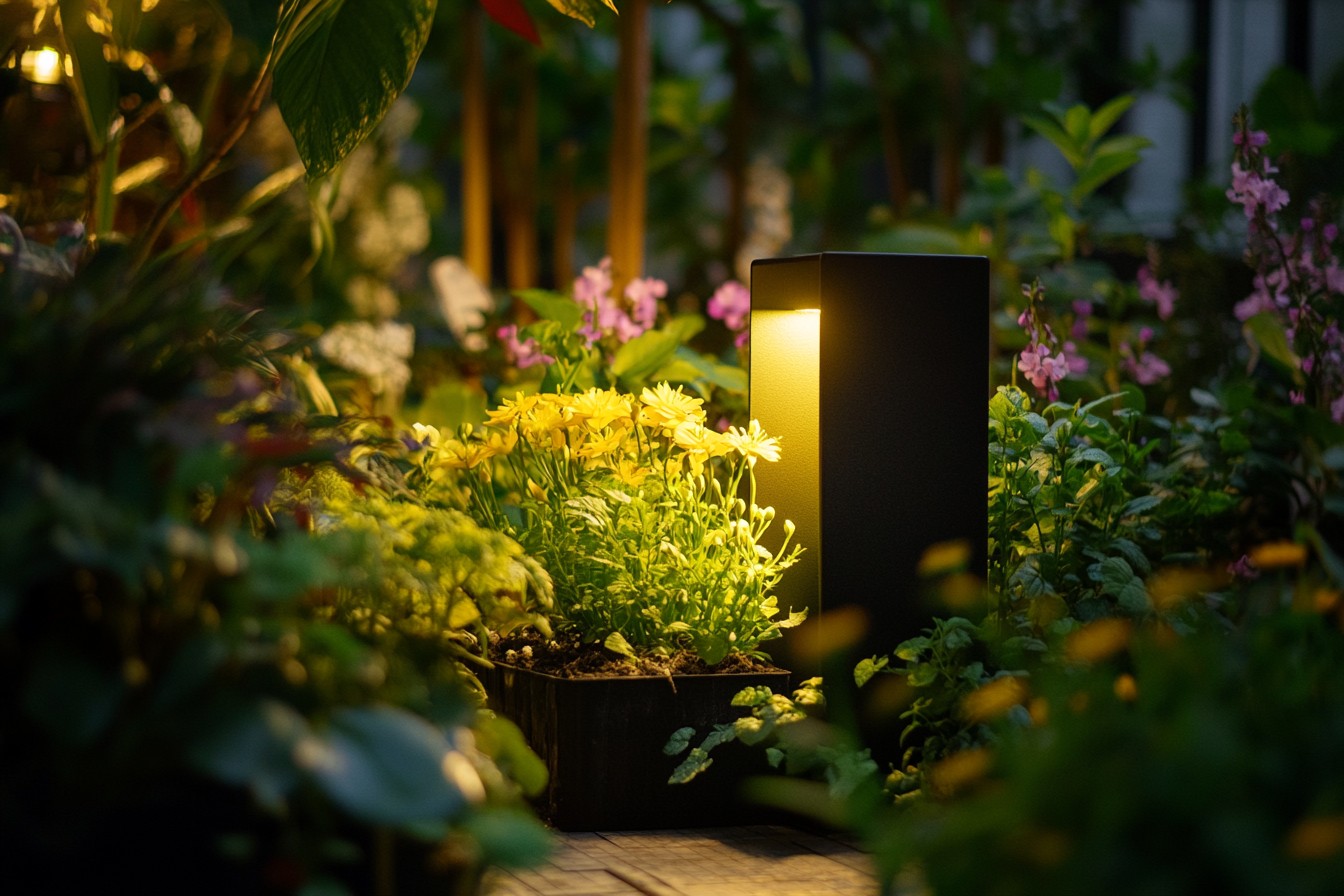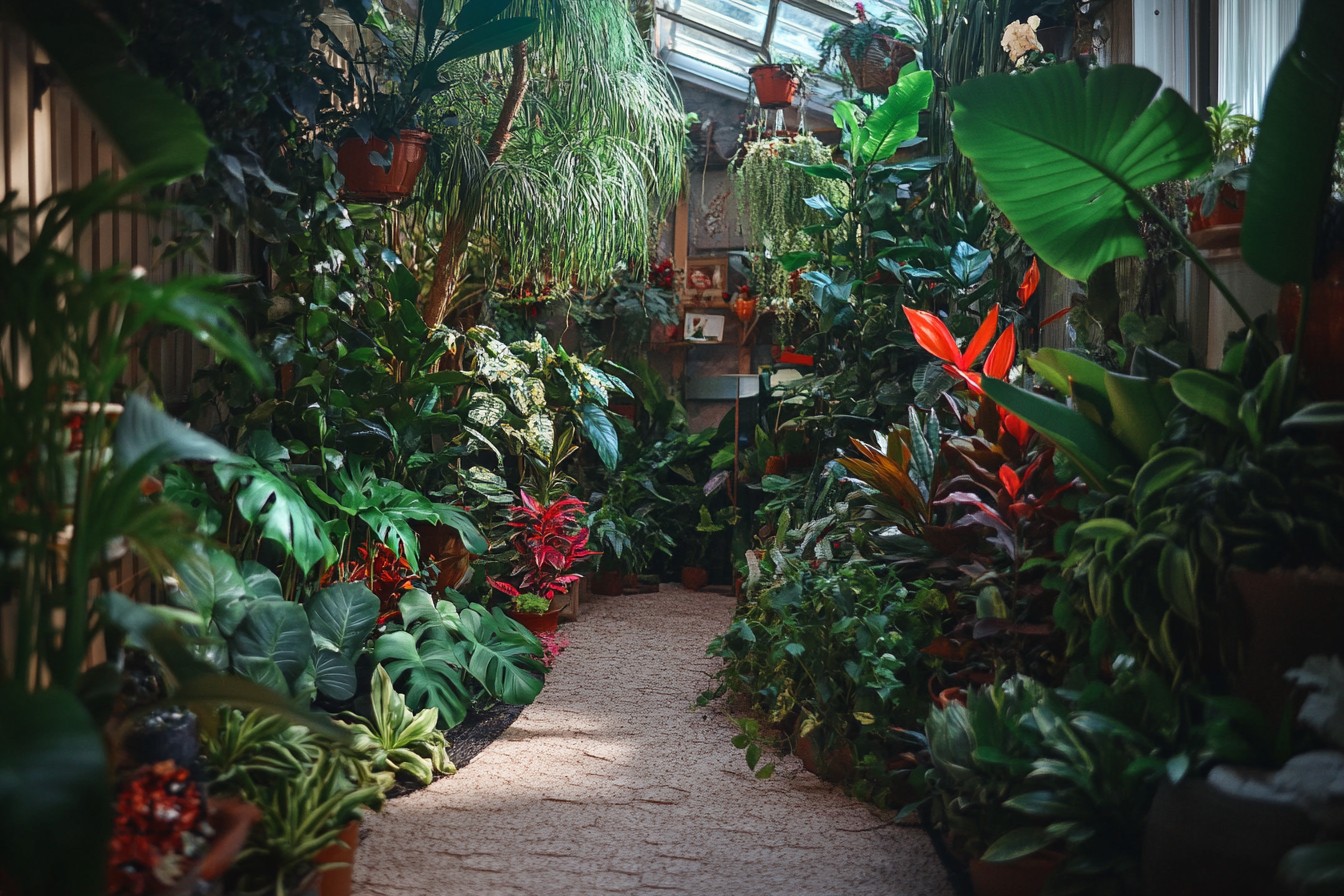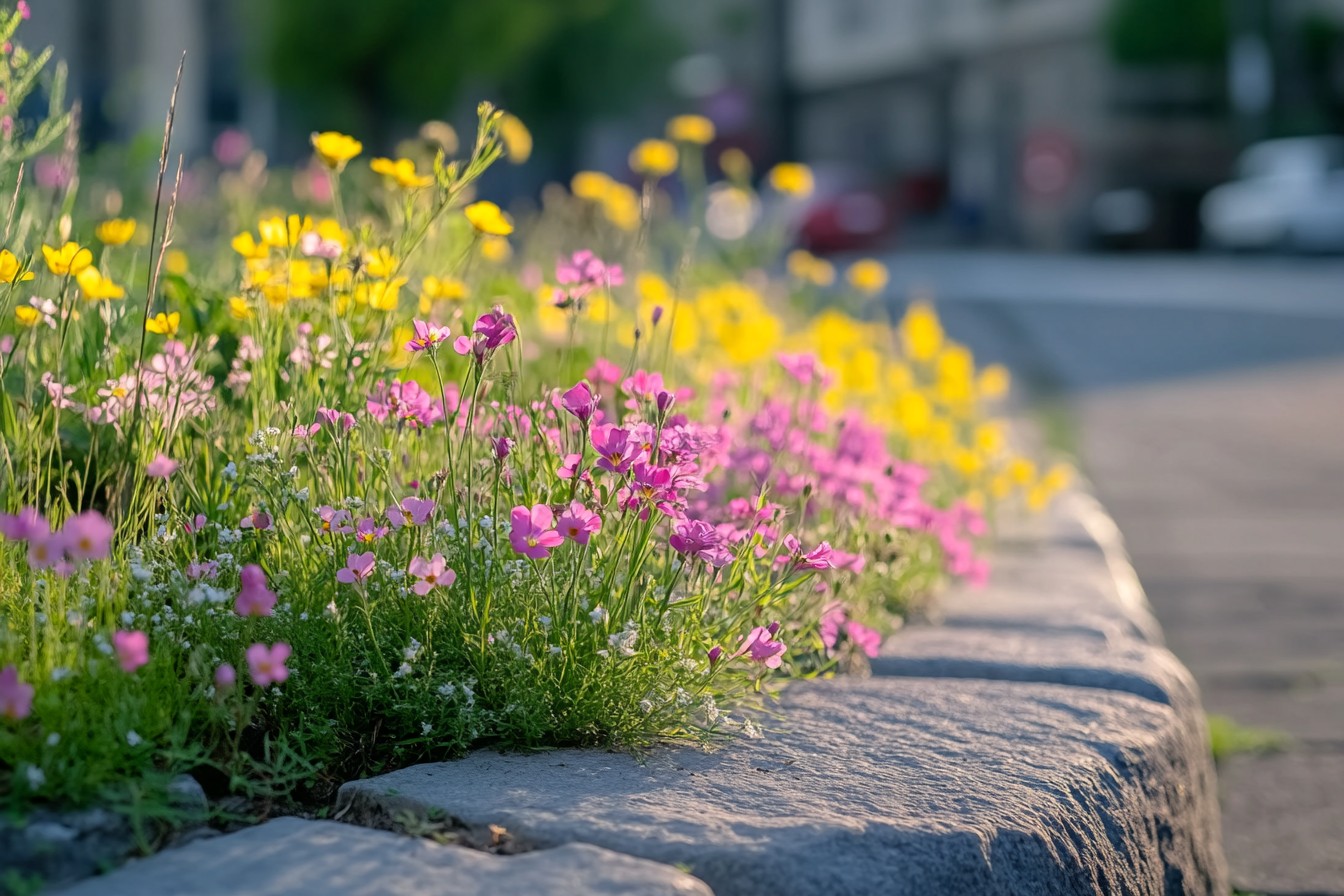I killed my first batch of seedlings with kindness. Specifically, with a 1000-watt halogen work light that I salvaged from my dad’s garage and set up approximately 8 inches above a tray of delicate tomato seedlings. It took exactly 7 hours for them to wither into crispy little plant corpses.
The light put out so much heat that it essentially turned my DIY growing shelf into an EasyBake oven. My girlfriend walked into the apartment, sniffed the air, and asked why it smelled like I was cooking basil. I was, just not intentionally.
That spectacular failure kicked off what’s become a five-year odyssey through the surprisingly complex world of indoor garden lighting. I’ve since tested everything from dollar store desk lamps to commercial-grade LED panels that required their own dedicated circuit. I’ve measured electricity usage, compared growth rates, tracked costs, and annoyed countless houseguests with the purple glow emanating from my spare bedroom.
All because I’m stubborn enough to believe I can grow sun-loving plants in a north-facing apartment in Chicago. After the Great Seedling Massacre of 2018, I started researching actual grow lights instead of just using whatever I had lying around. My first legitimate purchase was a set of four T5 fluorescent tubes in a fixture that cost $67 at the local hydroponic store (where I definitely got some suspicious looks as a nervous first-time customer).
The setup was bulky – a 4-foot metal housing suspended by adjustable chains above my growing shelf – but it worked. The light was bright but not scorching, and my next batch of seedlings actually survived. Success!
The T5s had pros and cons. On the plus side, they provided even light coverage across my 2’×4′ growing area and didn’t generate excessive heat. The plants grew steadily, if not spectacularly, and the system was simple to use.
The downsides became apparent over time: the bulbs were fragile and awkward to replace, the fixture took up a ton of storage space when not in use, and most importantly, the electricity cost was higher than I’d expected. My calculations showed the setup drawing about 216 watts continuously, which at Chicago’s electric rates added roughly $19 to my monthly bill while running 16 hours daily. Not terrible, but not negligible either.
The fluorescents served me well for about a year before I started noticing diminishing results. Apparently, even though the bulbs still looked bright to my eyes, their effective output for plant growth decreases significantly over time. I was getting leggy seedlings even though nothing else in my process had changed.
Another $45 for new bulbs had me wondering if there might be a better solution. That’s when I fell down the LED rabbit hole. After reading approximately 347 contradictory reviews online, I invested in a “full spectrum” LED panel for $125 that promised the sun in a box.
It was a purple-hued UFO-looking thing that made my apartment look like a sci-fi movie every time I turned it on. The light was intensely bright despite drawing only 85 watts, which meant my electricity cost dropped to about $7.50 per month – less than half of the fluorescent setup. The results were…
mixed. Leafy greens absolutely exploded under this light. My lettuce, spinach, and herbs grew faster and bushier than they ever had under the T5s.
But my tomato and pepper seedlings struggled, growing tall and spindly despite the light being positioned just 12 inches above them according to the manufacturer’s instructions. I later learned that while the light advertised itself as “full spectrum,” it was heavily weighted toward the blue end, which promotes leafy growth but isn’t ideal for fruiting plants. Lesson learned: marketing terms like “full spectrum” can be misleading, and not all plant types need the same light.
My solution was embarrassingly simple but effective – I kept the LED panel for my greens and bought a second, different LED specifically designed for flowering/fruiting plants for $95. This one had more red in its spectrum and made my growing area look like a strange nightclub when both lights were on, but the plants didn’t seem to mind. The combined energy usage of both panels was still less than the old fluorescent system at about 150 watts total, keeping my monthly electricity cost around $13.
The biggest game-changer was adding a real timer to my lighting setup. My first attempt had been a mechanical timer from the hardware store for $11 that worked well enough but was loud (with an audible “click” that would wake me up if it cycled during the night) and not very precise. I upgraded to a digital timer with battery backup for $24 that could be programmed in 1-minute increments.
This allowed me to create more sophisticated light schedules, including a gradual “sunrise/sunset” effect by staggering when different lights turned on and off. The plants responded noticeably better to this more natural light cycle, particularly the peppers, which finally stopped stretching and developed stockier stems. The most extravagant lighting experiment came last winter when I decided to try growing full-sized tomato plants indoors.
I invested in a commercial-grade LED bar light system – $275 that made me wince when I hit the “purchase” button. The specs were impressive: adjustable spectrum, 320 watts of actual draw (not the “equivalent” wattage many companies advertise), and a coverage area of about 3’×4′. Installation required mounting it to my ceiling and running a dedicated power line, which meant calling in a favor from my electrician friend Dave (cost: one homemade dinner and a six-pack of craft beer).
Was it worth it? For growing actual tomatoes indoors in the middle of a Chicago winter… almost.
The system drew about $28 worth of electricity per month, and over a four-month growing period, I harvested approximately 27 pounds of tomatoes from four plants. If I value those winter tomatoes at about $4/pound (organic, locally grown winter tomatoes are pricey), that’s about $108 worth of produce. Subtract the electric cost ($112) and amortize the equipment cost over several years, and it’s definitely not a money-saving proposition.
But biting into a fresh, ripe tomato while looking out at two feet of snow made me feel like I was somehow cheating nature, which has its own value. For average home growers who don’t share my slightly obsessive tendencies, I’ve found that the sweet spot in terms of cost versus performance is a mid-range LED panel in the $80-120 range. Look for actual wattage draw (not “equivalent” numbers), a true spectrum breakdown (not just “full spectrum” marketing), and adjustable height.
Based on my measurements across different setups, here’s what various plants seemed to prefer:
Leafy greens (lettuce, spinach, kale): Thrived under lights with stronger blue spectrum components (5000-6500K color temperature), needed about 30 watts of actual LED power per square foot of growing area, and did best with 14-16 hours of light daily. Growth was approximately 30% faster under these conditions compared to my north-facing windowsill. Herbs (basil, cilantro, mint): Similar to leafy greens but slightly more tolerant of varied conditions.
Basil, in particular, showed exceptional growth with 16 hours of combined blue/red spectrum light, producing harvestable amounts about 25 days from seed – nearly two weeks faster than the same varieties grown in my summertime outdoor garden. Fruiting plants (tomatoes, peppers): Required much more light intensity – about 50 watts of actual LED power per square foot – and benefited from increased red spectrum (3000-4000K color temperature). They also needed longer duration, with 16-18 hours yielding the best results.
Without sufficient light, they grew tall and spindly with minimal fruit production; with optimal light, they remained compact with thick stems and produced nearly as well as their outdoor counterparts. Flowering plants (marigolds, zinnias): Surprisingly demanding, requiring balanced spectrum light and at least 12 hours daily. My most successful indoor flowers came from using a combination lighting approach – blue-heavy LEDs during vegetative growth, then switching to red-heavy as flower buds formed.
The positioning of lights proved just as important as the type. Through trial and painful error, I discovered that different plants have different ideal distances from light sources:
Seedlings: 14-18 inches from LED panels, closer (8-12 inches) for lower-powered systems
Leafy greens: 12-16 inches for optimal growth without leaf burn
Fruiting plants: 8-12 inches once established, with careful monitoring for heat stress
Flowering plants: 12-18 inches, adjusted based on bloom development
I’ve also experimented with reflective materials to maximize light efficiency. Basic aluminum foil was my first attempt – cheap but surprisingly ineffective because it creates hotspots and uneven reflection.
White-painted walls increased light efficiency by about 15% according to my light meter readings. Mylar emergency blankets ($4 for a pack of 4) boosted efficiency by around 25% but were flimsy and annoying to work with. The winner was a roll of actual horticultural reflective material for $27 that increased measurable light at plant level by nearly 40% compared to no reflective surfaces.
My current lighting setup represents everything I’ve learned through this expensive, occasionally frustrating journey. I use different systems for different growing areas:
Seedling station: Two 45-watt LED panels with adjustable height and predominantly blue spectrum, running 14 hours daily. Monthly electricity cost: approximately $5.60.
Leafy green/herb area: One 120-watt full-spectrum LED panel supplemented with a 30-watt blue-spectrum light bar, running 16 hours daily. Monthly electricity cost: about $13.20. Fruiting plant section: The commercial 320-watt LED system with adjustable spectrum, running on a progressive timer that provides 18 hours of varied light intensity.
Monthly electricity cost: around $28 when running continuously. All systems are connected to digital timers with battery backup and surge protection, because losing a light cycle during a brief power outage can trigger unwanted flowering in some plants. The total monthly electricity usage for all indoor growing lights averages about $46 in winter when all systems are running, and about $18 in summer when I’m only starting seedlings and growing a few specialty plants indoors.
Is it worth it? From a purely economic standpoint, absolutely not. I could buy a lot of produce for what I’ve spent on lighting equipment and electricity.
But that’s never really been the point. There’s something deeply satisfying about harvesting fresh basil for pasta in January, watching seedlings emerge under perfectly tuned light, or showing off homegrown cherry tomatoes at a holiday party while it’s snowing outside. My girlfriend has mostly made peace with the purple glow from under the spare room door, though she still occasionally refers to it as my “alien communication center.” My electricity provider probably thinks I’m running some kind of illicit operation based on my usage patterns.
And I’ve accepted that no matter how sophisticated my lighting setup becomes, nothing quite replicates actual sunshine – but I’m going to keep trying anyway, one light panel and slightly lower electricity bill at a time.

